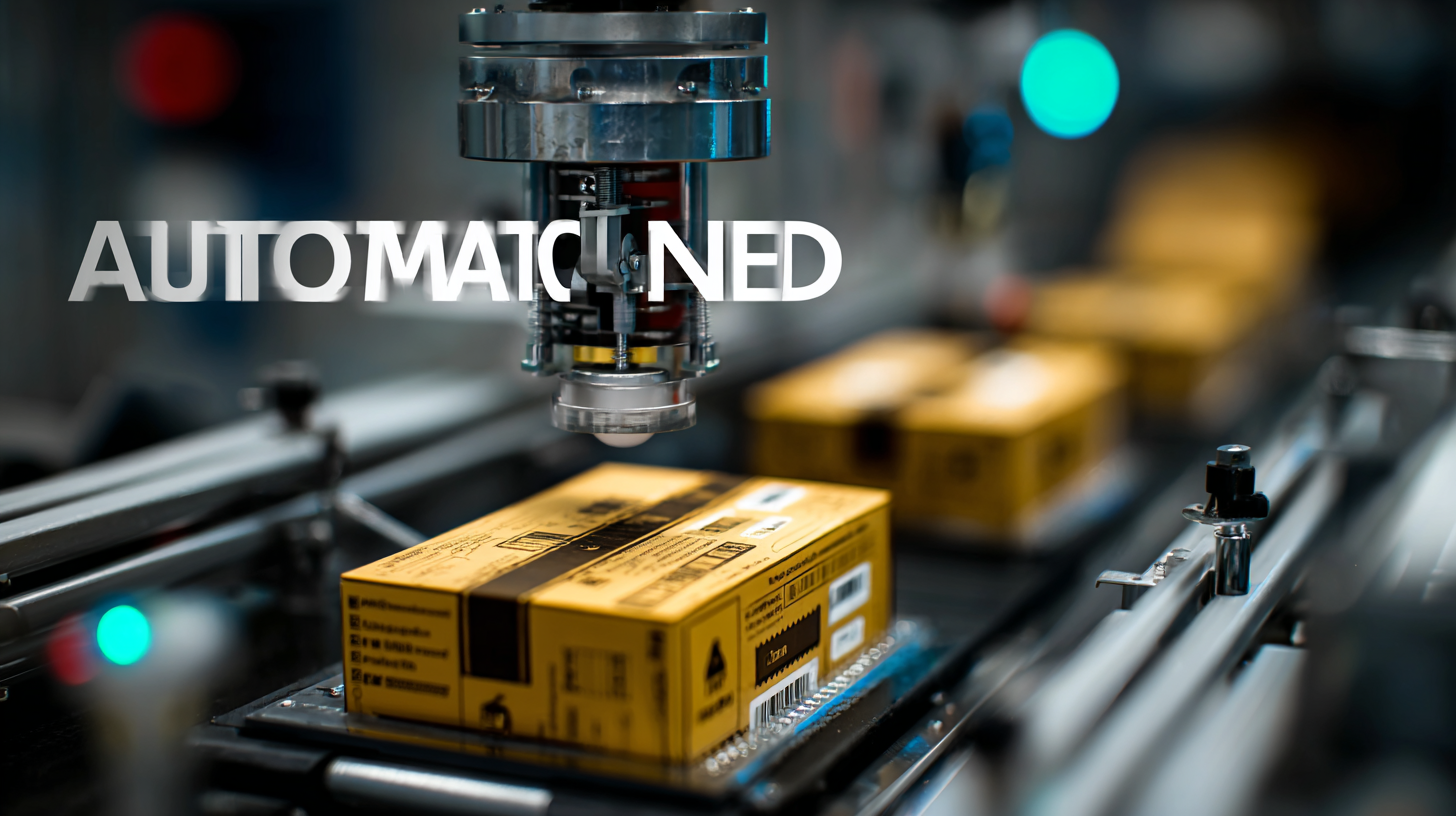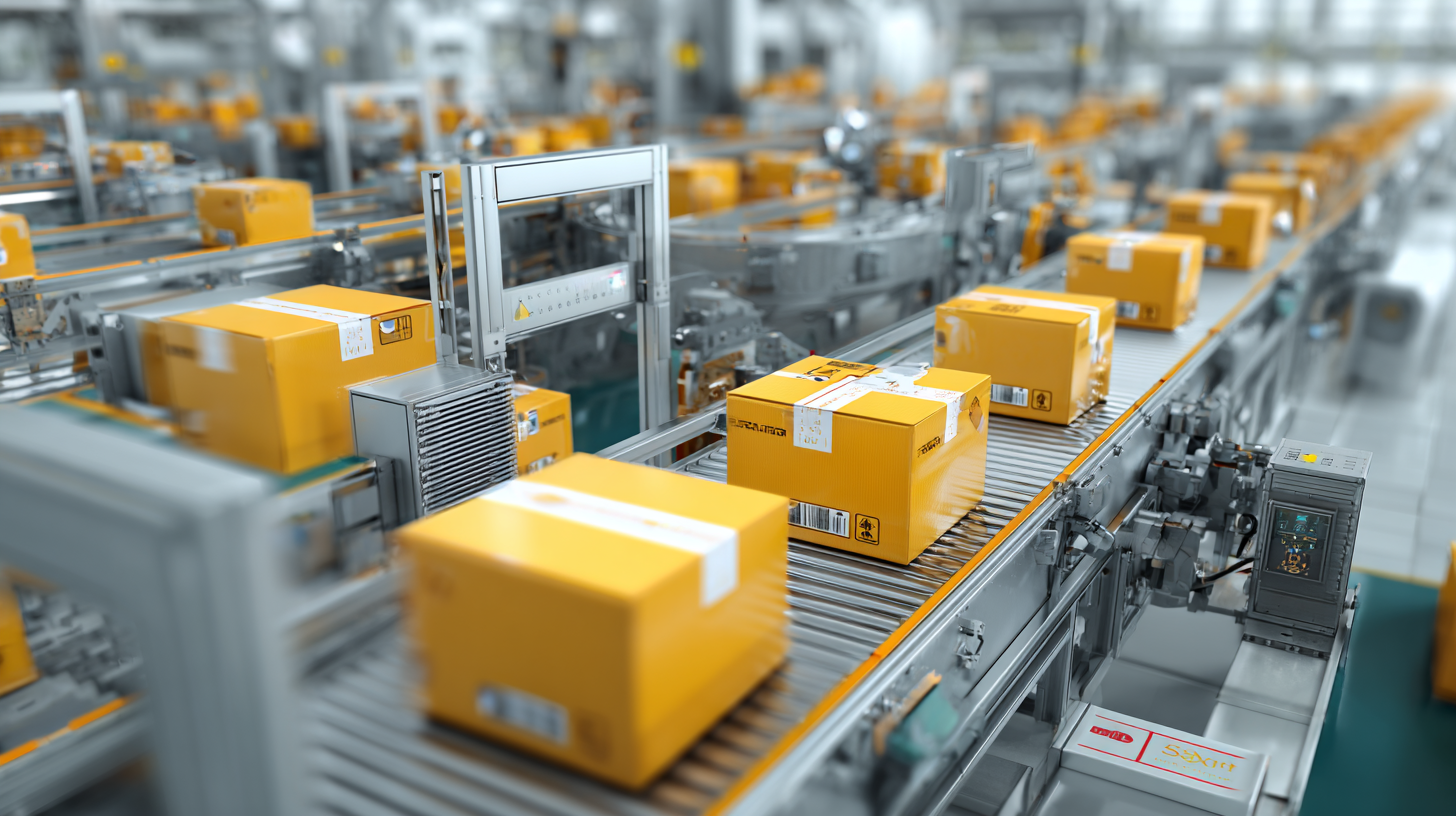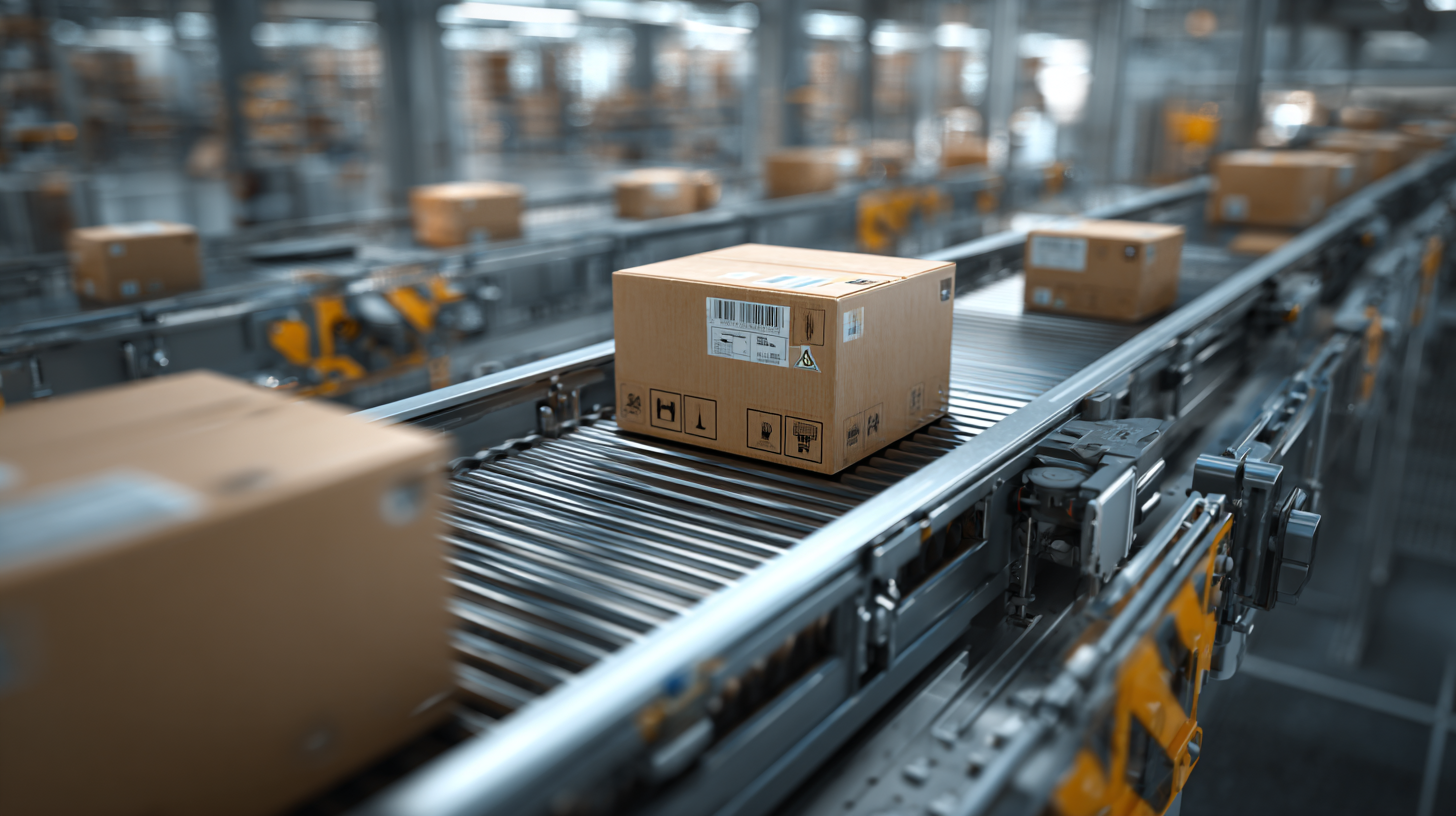Ultimate Guide to Choosing the Best Automated Packaging Solutions for Your Business Needs
In today's rapidly evolving business landscape, the importance of efficient and cost-effective packaging solutions cannot be overstated. As companies strive to enhance productivity and meet the growing demands of consumerism, Automated Packaging has emerged as a pivotal innovation in various industries. This comprehensive guide aims to illuminate the various aspects of choosing the best automated packaging solutions tailored to your business needs.

By exploring the latest technologies, different types of automated systems, and their respective benefits, we will equip you with the knowledge necessary to make informed decisions. Whether you are a small startup or a large-scale manufacturer, understanding how to integrate automated packaging into your operations can significantly streamline processes, reduce labor costs, and improve product consistency. Join us as we delve into the essential elements that will guide you in selecting the right automated packaging solution for your unique requirements.
Understanding Automated Packaging Solutions: Benefits for Your Business
Automated packaging solutions have become a critical component for businesses seeking efficiency and cost savings in their operations. According to a report by Smithers Pira, the global market for automated packaging is expected to reach $45 billion by 2025, growing at an annual rate of 12.6%. This surge illustrates the increasing reliance on automation to streamline packaging processes, reduce labor costs, and enhance productivity. For instance, companies that incorporate automated packaging systems can achieve up to 50% faster packaging speeds compared to manual methods, resulting in notable gains in throughput.
The benefits of these solutions extend beyond mere speed; they also significantly improve product safety and reduce material waste. A study by the Packaging Machinery Manufacturers Institute (PMMI) found that 70% of manufacturers reported a decrease in product damage after implementing automated packaging systems. Additionally, automation enables precise measurement and optimized material usage, thus minimizing excess waste. As businesses increasingly prioritize sustainability, automated solutions not only meet operational objectives but also support environmental goals by contributing to more responsible packaging practices.
Automated Packaging Solutions: Benefits for Your Business
Key Factors to Consider When Selecting Packaging Equipment
When selecting automated packaging solutions for your business, it’s vital to consider several key factors that can greatly impact efficiency and effectiveness. First, assess the specific needs of your production line, including the type of products being packaged. Different products—such as liquids, solids, or biologic drug products—require distinct handling methods and specialized machinery to ensure safety and reliability. For instance, liquid filling machines are projected to see significant growth, highlighting their importance for businesses in industries like beverages, pharmaceuticals, and personal care.
Additionally, flexibility and scalability of the equipment play a crucial role in future-proofing your investment. As markets evolve, the ability to adjust packaging sizes, formats, or processes without extensive downtime is essential. Investing in multifunctional machinery can help businesses stay competitive, particularly in growing sectors such as seafood and meat processing, where equipment must adapt to changing product demands and regulatory environments. Evaluating automation technology not only improves efficiency but also enhances the overall quality of packaging, which is crucial for maintaining brand integrity and customer satisfaction.

Top Chinese Manufacturers of Automated Packaging Solutions
When it comes to automated packaging solutions, China has emerged as a global leader, catering to a wide range of industries from food and beverage to pharmaceuticals. According to a recent market report by Mordor Intelligence, the global automated packaging market is projected to reach $50 billion by 2026, with Asian markets, particularly China, expected to contribute significantly to this growth. Top Chinese manufacturers such as Lianhe装机, Sidel, and ANKO have developed innovative solutions that enhance efficiency and reduce operational costs for businesses looking to modernize their packaging processes.
Tips for selecting the right automated packaging solution include assessing your specific needs and production volumes. Understanding the types of products you package, for instance, can help determine the best machinery for your operation. Also, consider manufacturers' capabilities to customize their solutions: a tailored approach can greatly improve your workflow and minimize waste. Furthermore, look for suppliers with robust after-sales support, as ongoing maintenance is crucial for keeping your equipment running smoothly.
Another important factor is the sustainability of the packaging solutions offered. With the global push toward eco-friendly practices, many leading manufacturers are incorporating sustainable materials and processes in their products. Research by Smithers Pira highlights that 70% of businesses are prioritizing sustainability in their packaging choices. Engaging with manufacturers that focus on eco-innovations not only aligns with market trends but also enhances your corporate social responsibility efforts.
Cost Analysis: Balancing Quality and Price in Packaging Solutions
When it comes to selecting automated packaging solutions, a thorough cost analysis is essential to achieve the perfect balance between quality and price. Businesses often find themselves at a crossroads, where opting for the cheapest solution may result in inferior quality and increased long-term costs. It's crucial to consider not just the upfront expenditure, but also the operational efficiency and durability of the packaging machinery. High-quality automated solutions tend to reduce waste, enhance production speed, and minimize labor costs, which can lead to significant savings over time.

Additionally, evaluating vendor reputations and customer reviews plays a vital role in understanding the long-term value of a packaging solution. Investing in reliable, high-quality equipment may come at a higher initial price, but the benefits of reduced downtime and maintenance costs often justify the expense. Moreover, consider potential hidden costs associated with less-than-ideal packaging materials, such as their impact on product integrity and customer satisfaction. By balancing quality with price, businesses can make informed decisions that not only meet their immediate packaging needs but also contribute to sustained growth and efficiency.
Future Trends in Automated Packaging: What to Expect from Innovations
As we move towards a more automated future, the packaging industry is undergoing significant transformations driven by advanced technologies. In 2024, the machine vision and vision-guided robots market is projected to reach a staggering value of $2,109,044,000, with expectations to climb to $4,601,337,000 by 2032, reflecting a robust compound annual growth rate (CAGR) of 10.24%. This rapid growth underscores the increasing reliance on intelligent systems to enhance packaging efficiency and accuracy.
Another key area poised for expansion is the pre-made pouch packaging machine market, which is expected to grow from $3.36 billion in 2023 to $5.5 billion by 2032. This surge is fueled by the demand for versatile packaging solutions that can accommodate a variety of products while optimizing shelf space and reducing waste. Similarly, the artificial intelligence packaging market is anticipated to gain momentum, with a projected value of $2 billion by 2024 and a CAGR of over 10.1% through 2034, driven by an emphasis on supply chain transparency and packaging traceability. As innovations continue to emerge, businesses must stay abreast of these trends to leverage automated packaging solutions that meet their evolving needs.
